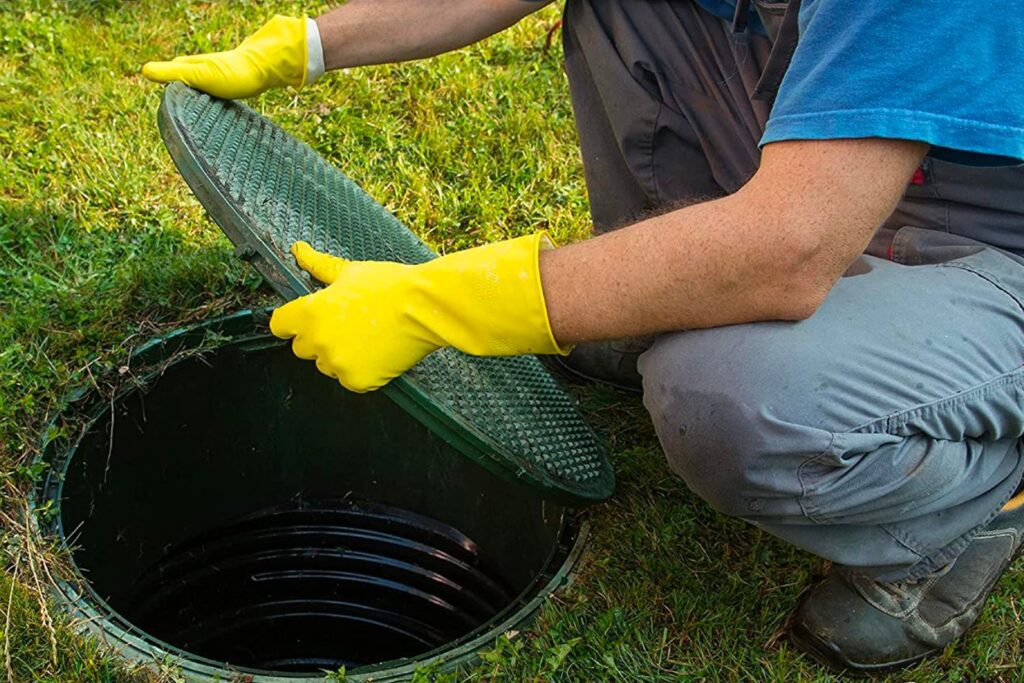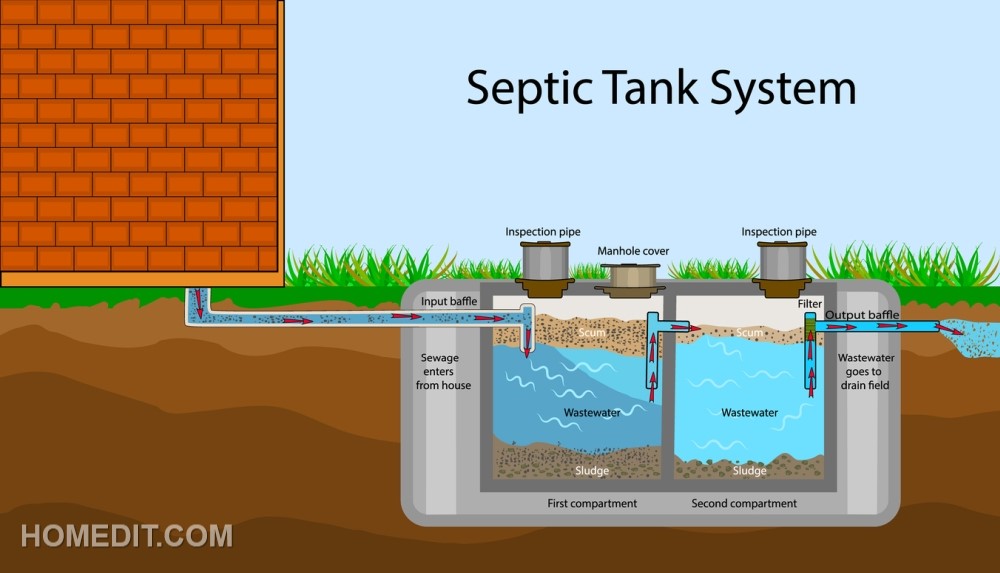Are you tired of dealing with septic tank issues and constantly worrying about the health of your system? If so, you’re not alone. Many homeowners struggle to find the best septic tank treatment to maintain optimal performance and avoid costly repairs. In this article, we will explore the various options available in the market and discuss the pros and cons of each. By the end, you’ll have a clear understanding of what treatment is best suited for your septic tank, ensuring its longevity and efficiency for years to come.
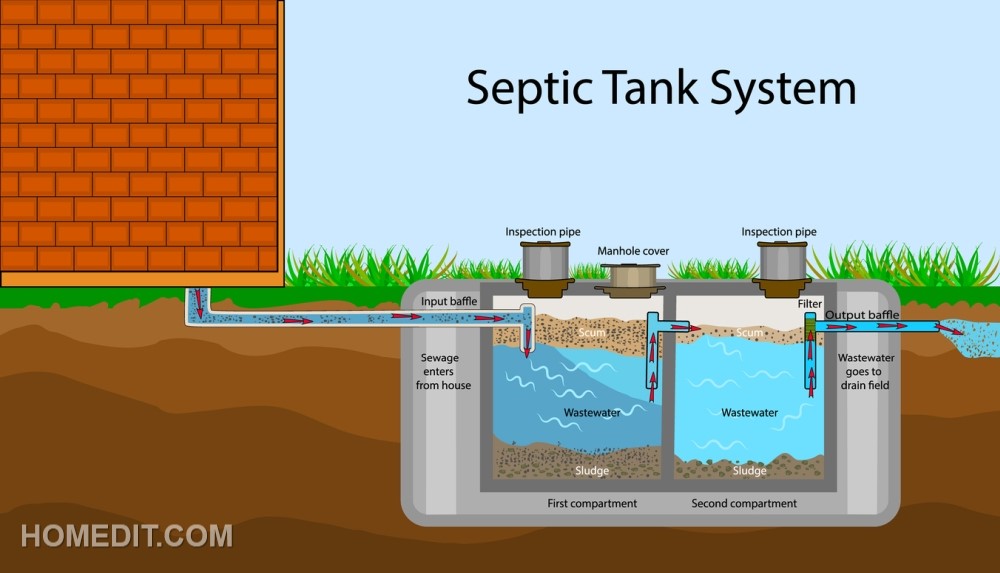
Overview of Septic Tank Treatment
Understanding Septic Tanks
Septic tanks are an essential part of many homes and properties that are not connected to a municipal sewer line. These tanks are responsible for collecting and treating the wastewater that flows from your toilets, sinks, showers, and other plumbing fixtures. Understanding how septic tanks work is crucial to maintaining their functionality and preventing costly repairs.
Importance of Septic Tank Treatment
Regular maintenance and treatment of your septic tank are vital for ensuring its longevity and optimal performance. The treatment helps to break down the solid waste and organic matter that accumulate in the tank over time. Without proper treatment, the waste can build up, leading to clogging, blockages, and potential damage to the tank itself. By investing in septic tank treatment, you can avoid costly repairs and ensure the smooth operation of your septic system.
Functionality of Septic Tank Treatment
Septic tank treatment works by introducing specific chemicals or natural ingredients into the tank to facilitate the breakdown of solid waste and organic matter. These treatments stimulate the growth of beneficial bacteria and enzymes that help break down the waste into simpler components. Additionally, some treatment products may also include ingredients that adjust the pH levels, provide oxygenation, or enhance the overall bacterial activity in the tank. The primary goal is to optimize the treatment process and maintain a healthy balance of bacteria and enzymes in the septic system.
Factors to Consider before Choosing a Septic Tank Treatment
Septic Tank Size
The size of your septic tank plays a significant role in determining the type and amount of treatment required. Smaller tanks may require more frequent treatments, while larger ones may need less frequent maintenance. It is essential to consider the size of your tank when choosing a treatment product to ensure it provides adequate treatment for your specific requirements.
Septic Tank Material
Septic tanks can be made of various materials, including concrete, fiberglass, and plastic. The material of your tank can impact the effectiveness of treatment products. For example, some chemical treatments may not be suitable for certain types of tanks, as they can cause damage or deterioration. It is crucial to choose a treatment option that is compatible with your septic tank material to ensure optimal results and prevent any potential harm to the tank.
Soil Type
The type of soil surrounding your septic tank and drainfield can also influence the choice of treatment. Different types of soil have varying capacities for absorbing and filtering wastewater. Some treatment products are specifically formulated to address issues related to certain soil types, such as clay or sandy soils. Assessing your soil type can help you determine the most appropriate treatment option for your septic system.
Local Regulations and Guidelines
Before choosing a septic tank treatment, it is essential to familiarize yourself with the local regulations and guidelines governing septic systems in your area. Some regions have specific guidelines regarding the types of treatments that are allowed or recommended. By adhering to these regulations, you can ensure the proper functioning of your septic system and avoid any legal penalties.
Chemical vs. Natural Septic Tank Treatments
Chemical Treatment Options
Chemical septic tank treatments typically involve the use of synthetic substances that are designed to accelerate the breakdown of waste in the tank. These treatments often come in the form of powders or liquids that are flushed down the toilet or directly poured into the septic system. Chemical treatments often contain enzymes, bacteria, or other active ingredients that target and break down organic matter.
Natural Treatment Options
Natural septic tank treatments focus on using environmentally friendly ingredients to promote the natural treatment processes within the tank. These treatments often rely on beneficial bacteria and enzymes, which are naturally present in the tank, but may need a boost to maintain optimal levels. Natural treatments may also include additives like oxygenators, nitrogen fixers, and pH adjusters to enhance the tank’s overall performance.
Pros and Cons of Chemical Treatments
Chemical treatments offer several benefits, such as rapid results and ease of use. They are often designed to work quickly, breaking down waste and eliminating odors effectively. However, some chemical treatments may contain harsh chemicals that can kill off beneficial bacteria or have adverse effects on the environment. Additionally, over-reliance on chemical treatments may lead to the development of resistant bacteria, reducing their long-term effectiveness.
Pros and Cons of Natural Treatments
Natural septic tank treatments provide a more environmentally friendly approach to maintaining your septic system. They utilize naturally occurring bacteria and enzymes to break down waste and promote a healthy balance of microorganisms in the tank. Natural treatments are generally safe for the environment, and their continued use can result in the development of robust bacterial populations. However, natural treatments may require a longer time to show noticeable results, and they may not be as effective in cases of severe clogs or backups.
Common Ingredients in Septic Tank Treatments
Bacteria and Enzymes
Beneficial bacteria and enzymes are the cornerstone of most septic tank treatments. These microorganisms help break down organic matter, including fats, oils, and solid waste, converting them into simpler components. The bacteria break down complex molecules into smaller particles, while the enzymes help facilitate the breakdown process, ensuring efficient waste decomposition.
Oxygenators
Oxygenators are additives that introduce oxygen into the septic system. Oxygen is essential for the growth and activity of aerobic bacteria, which thrive in oxygen-rich environments. These bacteria play a crucial role in breaking down waste and reducing odors. By introducing oxygenators, you can enhance the overall treatment performance of your septic tank.
Nitrogen Fixers
Nitrogen fixers are ingredients that promote the conversion of nitrogen compounds within the septic system. They help convert harmful nitrogen compounds, such as ammonia, into harmless nitrogen gas, which is released into the atmosphere. Nitrogen fixers play a vital role in reducing groundwater contamination and minimizing environmental impact.
pH Adjusters
pH adjusters are substances that help maintain the optimal pH balance within the septic tank. They ensure that the tank’s pH remains within the range that is favorable for the growth of beneficial bacteria. Adjusting the pH can help create a more favorable environment for the microorganisms responsible for breaking down waste.
Emulsifiers
Emulsifiers are common ingredients found in some septic tank treatments. These substances help break down fat, oil, and grease, preventing them from accumulating and clogging the septic system. Emulsifiers work by breaking down these substances into tiny droplets, making it easier for the bacteria and enzymes to digest them.
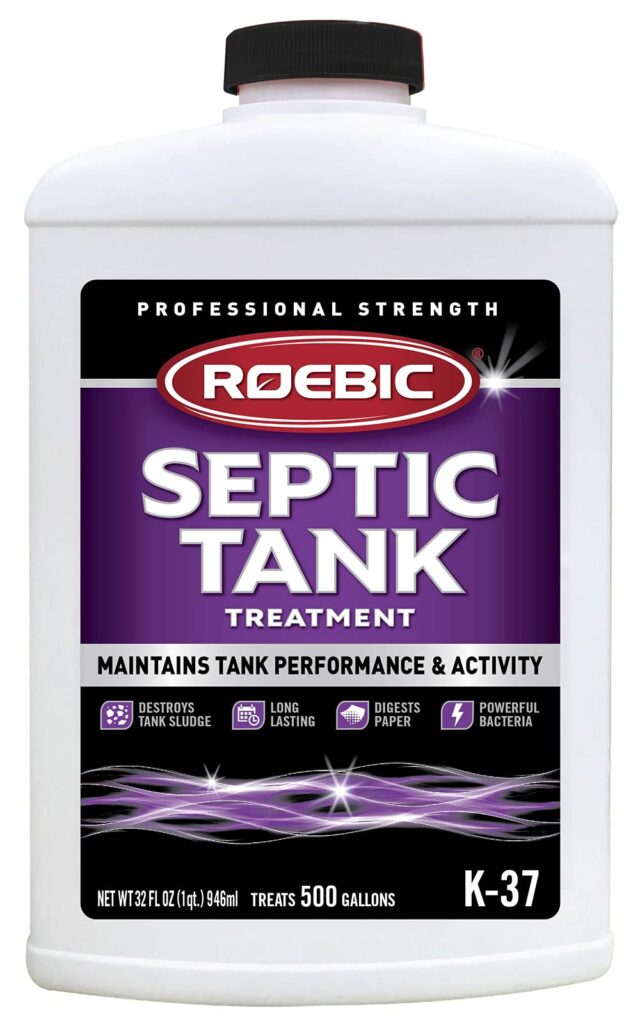
Choosing the Best Septic Tank Treatment
Assessing Your System’s Needs
When selecting a septic tank treatment, it is essential to assess the specific needs of your system. Consider factors such as the size of your tank, the presence of any issues or odors, and the type of waste that accumulates in the tank. By understanding your system’s needs, you can choose a treatment that targets your specific requirements effectively.
Considering Environmental Impact
Environmental impact should be a significant consideration when choosing a septic tank treatment. Opting for natural treatments or those with environmentally friendly ingredients can help minimize harm to the ecosystem surrounding your property. Look for treatments that are labeled as eco-friendly and have minimal impact on water sources and soil quality.
Reading Product Labels
To make an informed decision, it is essential to carefully read and understand the labels of septic tank treatments. Look for information on the active ingredients, recommended dosage or usage instructions, and any precautions or warnings. Understanding the product’s specifications and intended use can help you determine if it is suitable for your specific septic system.
Seeking Professional Advice
If you are unsure about which septic tank treatment to choose, it is always a good idea to seek professional advice. Septic system professionals, such as plumbers or septic tank service providers, can offer guidance based on their experience and knowledge. They can assess your system’s condition and recommend treatment options that are best suited to your needs.
Top Brands and Products for Septic Tank Treatment
Brand A
Brand A offers a range of septic tank treatment products that cater to different system sizes and needs. Their products contain a blend of beneficial bacteria, enzymes, and oxygenators to accelerate waste breakdown and control odors. Brand A’s treatments are known for their effectiveness and environmental friendliness.
Brand B
Brand B specializes in natural septic tank treatments. Their products are formulated with a unique blend of naturally occurring bacteria, enzymes, and nitrogen fixers. Brand B’s treatments are designed to promote the growth of natural microorganisms in the tank and are safe for the environment.
Brand C
Brand C is known for its chemical septic tank treatments. Their products offer quick and efficient waste breakdown, eliminating odors and preventing clogs. Brand C’s treatments include emulsifiers to tackle fat and grease buildup, along with pH adjusters to maintain a favorable environment for bacteria.
Product X
Product X is a popular septic tank treatment that utilizes a combination of bacteria, enzymes, and oxygenators. It is suitable for various septic tank sizes and effectively breaks down solid waste and organic matter. Product X has received positive reviews for its effectiveness and ease of use.
Product Y
Product Y stands out for its natural septic tank treatment approach. It contains a blend of beneficial bacteria, enzymes, and nitrogen fixers to enhance waste breakdown and minimize environmental impact. Product Y is highly regarded for its long-term results and compatibility with different soil types.
Product Z
Product Z offers a chemical septic tank treatment option that targets stubborn clogs and odors. Its powerful formula contains enzymes, bacteria, and emulsifiers that work together to break down waste and prevent buildup. Product Z is ideal for septic systems with heavy usage and has received positive feedback for its efficiency.
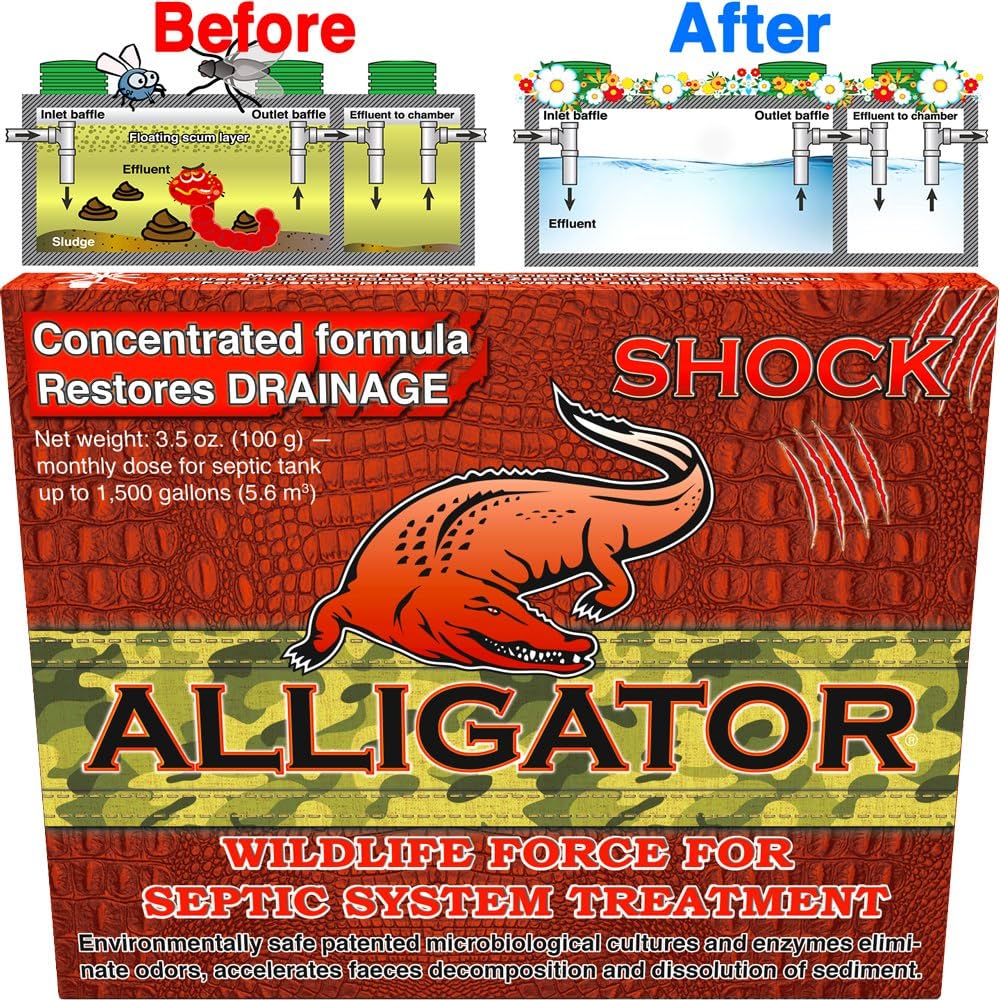
Cost-Effectiveness of Septic Tank Treatments
Initial Investment
When considering the cost-effectiveness of septic tank treatments, it is important to evaluate the initial investment required. Chemical treatments may often be less expensive upfront, while natural treatments may have a higher initial cost. However, the long-term benefits of natural treatments, such as reduced maintenance and repair costs, may outweigh the higher upfront expense.
Long-Term Savings
Investing in regular septic tank treatments can lead to long-term savings. By maintaining a healthy septic system, you can avoid costly repairs or replacements that may result from neglect or improper treatment. Additionally, regular treatments can extend the lifespan of your septic tank, saving you money in the long run.
Comparing Prices and Reviews
To determine the cost-effectiveness of different septic tank treatments, it is helpful to research and compare prices and reviews. Look for products that offer a balance between affordability and effectiveness. Reading reviews from other users can provide valuable insights into the product’s performance and value for money.
Dos and Don’ts of Using Septic Tank Treatments
Dos
- Do follow the recommended dosage and usage instructions provided by the manufacturer.
- Do treat your septic tank regularly to maintain a healthy balance of bacteria and enzymes.
- Do opt for treatments that are compatible with your septic tank material and soil type.
- Do inspect and pump your septic tank as recommended by professionals.
- Do use septic-safe cleaning products to avoid harmful chemicals entering the system.
Don’ts
- Don’t overuse or overdose septic tank treatments, as this can disrupt the biological balance in the tank.
- Don’t dispose of non-biodegradable or harmful chemicals down the drains or toilets.
- Don’t ignore signs of septic system issues, such as slow drains, foul odors, or backup.
- Don’t rely solely on septic tank treatments and neglect regular maintenance and inspections.
- Don’t use excessive water or overload the septic system with heavy water usage activities.
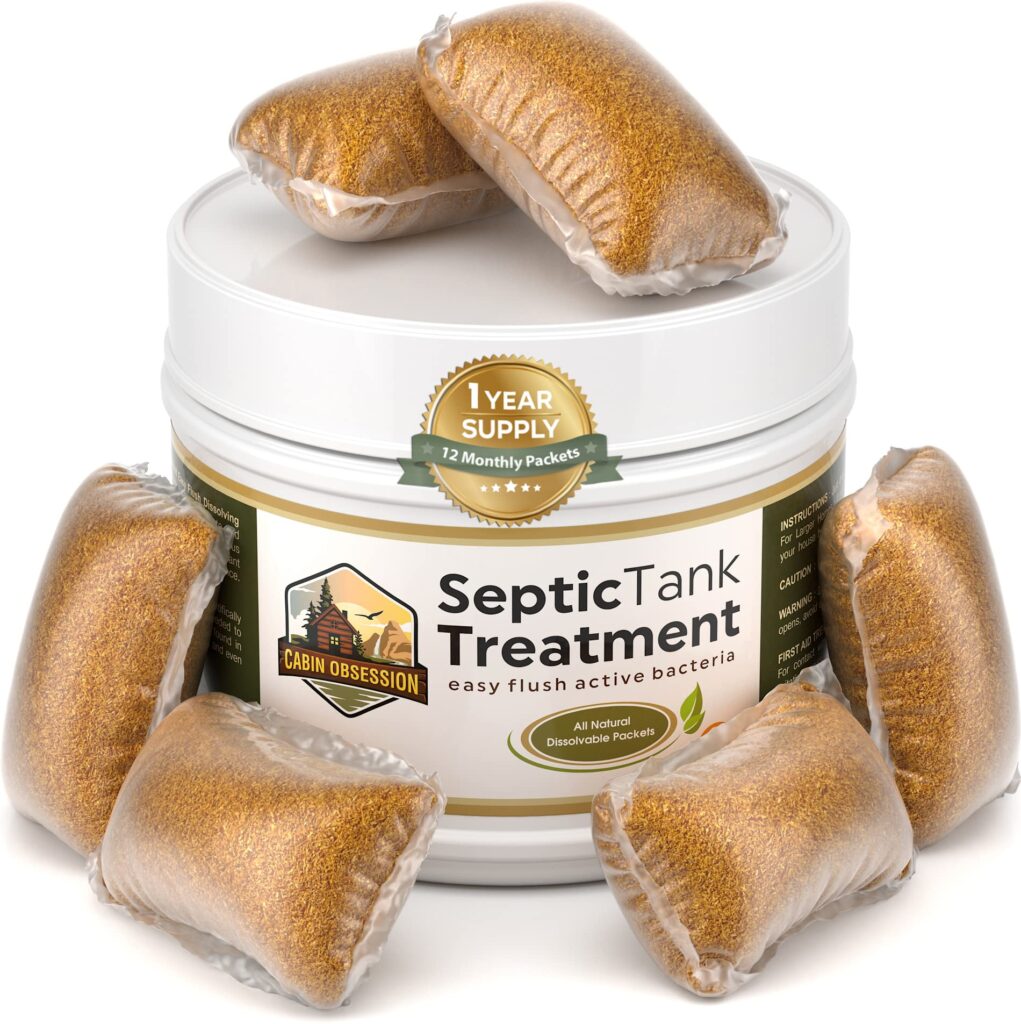
DIY Septic Tank Treatment Methods
Regular Pumping and Maintenance
Regular pumping and maintenance are essential to keep your septic system functioning smoothly. Hire a professional to inspect and pump your tank at least every 3-5 years, depending on the tank size and household usage. Proper maintenance can prevent major issues and prolong the lifespan of your septic tank.
Proper Waste Disposal
Proper waste disposal practices are crucial for maintaining a healthy septic system. Avoid flushing non-biodegradable items, such as wipes, feminine hygiene products, or chemicals, down the toilet. Dispose of cooking oils and grease in a separate container and avoid pouring them down the drain. By minimizing the introduction of harmful substances, you can prevent clogs and system failures.
Water Conservation
Conserving water can significantly impact the health and functionality of your septic system. Avoid excessive water usage by fixing leaks promptly, using low-flow fixtures, and spreading out high water usage activities throughout the day. By reducing water flow into the septic system, you allow more time for the waste to break down effectively.
Avoiding Harmful Chemicals
Harmful chemicals, such as bleach, antibacterial soaps, and strong cleaning agents, can disrupt the balance of beneficial bacteria in your septic tank. Opt for septic-safe or environmentally friendly cleaning products to minimize harm to the system. Avoid using excessive amounts of chemicals and try natural cleaning alternatives whenever possible.
Using Natural Cleaning Products
Using natural cleaning products can help maintain a healthy balance of bacteria in your septic system. Look for cleaning products that are labeled as septic-safe or eco-friendly. These products are typically free from harsh chemicals that can harm the bacterial composition in the tank. Using natural cleaning products can contribute to the overall health and performance of your septic system.
Conclusion
Choosing the best septic tank treatment requires careful consideration of various factors, such as the size of your tank, the materials used, soil type, and local regulations. Whether you opt for chemical or natural treatments, it is important to prioritize the long-term health of your septic system and the environment. Regular maintenance, proper waste disposal, and using compatible cleaning products are essential for maximizing the effectiveness of any treatment chosen. By following these guidelines and seeking professional advice when needed, you can ensure the longevity and optimal performance of your septic system.
